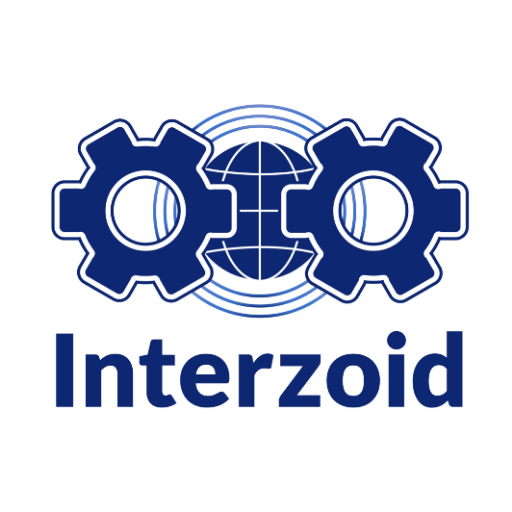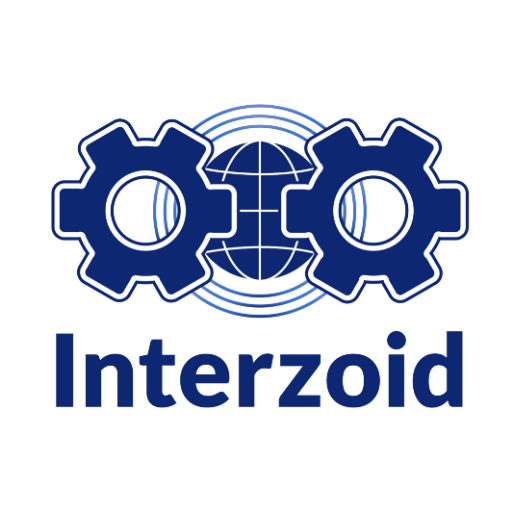Mock sample for your project: IBM Containers API
Integrate with "IBM Containers API" from bluemix.net in no time with Mockoon's ready to use mock sample

IBM Containers API
bluemix.net
Version: 3.0.0
Start working with "IBM Containers API" right away by using this ready-to-use mock sample. API mocking can greatly speed up your application development by removing all the tedious tasks or issues: API key provisioning, account creation, unplanned downtime, etc.
It also helps reduce your dependency on third-party APIs and improves your integration tests' quality and reliability by accounting for random failures, slow response time, etc.
Description
Containers are virtual software objects that include all the elements that an app needs to run. A container has the benefits of resource isolation and allocation but is more portable and efficient than, for example, a virtual machine.
This documentation describes the IBM Containers API, which is based on the Docker Remote API. The API provides endpoints that you can use to create and manage your single containers and container groups in Bluemix. Endpoints are summarized under the following tags:
Authentication: Retrieve and refresh your TLS certificates.
Private Docker images registry: Create your own private Docker images registry in Bluemix by setting a namespace for your organization.
Images: View, build, and push your images to your private Bluemix registry so you can use them with IBM Containers. You can also scan your container images with the Vulnerability Advisor against standard policies set by the organization manager and a database of known Ubuntu issues.
Single Containers: Create and manage single containers in Bluemix. Use a single container to implement short-lived processes or to run simple tests as you develop an app or service. To make your single container available from the internet, review the Public IP addresses endpoints.
Container Groups: Create and manage your container groups in Bluemix. A container group consists of multiple single containers that are all created from the same container image and as a consequence are configured in the same way. Container groups offer further options at no cost to make your app highly available. These options include in-built load balancing, auto-recovery of unhealthy container instances, and auto-scaling of container instances based on CPU and memory usage. Map a public route to your container group to make your app accessible from the internet.
Public IP addresses: Use these endpoints to request public IP addresses for your space. You can bind this IP address to your container to make your container accessible from the internet.
File shares: Create, list and delete file shares in a space. A file share is a NFS storage system that hosts Docker volumes.
Volumes: Create and manage container volumes in your space to persist the data of your containers.
Each API request requires an HTTP header that includes the 'X-Auth-Token’ and 'X-Auth-Project-Id’ parameter.
X-Auth-Token: The JSON web token (JWT) that you receive when logging into the Bluemix platform. It allows you to use the IBM Containers REST API, access services, and resources. Run cf oauth-token to retrieve your access token information.
X-Auth-Project-Id: The unique ID of your organization space where you want to create or work with your containers. Run cf space --guid, where is the name of your space, to retrieve your space ID.
For further information about how containers work in the IBM Containers service, review the documentation under https://new-console.ng.bluemix.net/docs/containers/container_index.html.
Other APIs in the same category
LambdaTest Screenshots API Documentation
Kubernetes

LaunchDarkly REST API

Interzoid Get Global Phone Number Information API
nic.at Domainfinder API Documentation

Labs64 NetLicensing RESTful API Test Center

Interzoid Get Global Time API
WebScraping.AI

Rudder API
Introduction
Rudder exposes a REST API, enabling the user to interact with Rudder without using the webapp, for example in scripts or cronjobs.
Versioning
Each time the API is extended with new features (new functions, new parameters, new responses, ...), it will be assigned a new version number. This will allow you
to keep your existing scripts (based on previous behavior). Versions will always be integers (no 2.1 or 3.3, just 2, 3, 4, ...) or latest.
You can change the version of the API used by setting it either within the url or in a header:
the URL: each URL is prefixed by its version id, like /api/version/function.
Version 10
curl -X GET -H "X-API-Token: yourToken" https://rudder.example.com/rudder/api/10/rules
Latest
curl -X GET -H "X-API-Token: yourToken" https://rudder.example.com/rudder/api/latest/rules
Wrong (not an integer) => 404 not found
curl -X GET -H "X-API-Token: yourToken" https://rudder.example.com/rudder/api/3.14/rules
the HTTP headers. You can add the X-API-Version header to your request. The value needs to be an integer or latest.
Version 10
curl -X GET -H "X-API-Token: yourToken" -H "X-API-Version: 10" https://rudder.example.com/rudder/api/rules
Wrong => Error response indicating which versions are available
curl -X GET -H "X-API-Token: yourToken" -H "X-API-Version: 3.14" https://rudder.example.com/rudder/api/rules
In the future, we may declare some versions as deprecated, in order to remove them in a later version of Rudder, but we will never remove any versions without warning, or without a safe
period of time to allow migration from previous versions.
Existing versions
Version
Rudder versions it appeared in
Description
1
Never released (for internal use only)
Experimental version
2 to 10 (deprecated)
4.3 and before
These versions provided the core set of API features for rules, directives, nodes global parameters, change requests and compliance, rudder settings and system API
11
5.0
New system API (replacing old localhost v1 api): status, maintenance operations and server behavior
12
6.0 and 6.1
Node key management
13
6.2
Node status endpoint
System health check
System maintenance job to purge software [that endpoint was back-ported in 6.1]
Response format
All responses from the API are in the JSON format.
{
"action": The name of the called function,
"id": The ID of the element you want, if relevant,
"result": The result of your action: success or error,
"data": Only present if this is a success and depends on the function, it's usually a JSON object,
"errorDetails": Only present if this is an error, it contains the error message
}
Success responses are sent with the 200 HTTP (Success) code
Error responses are sent with a HTTP error code (mostly 5xx...)
HTTP method
Rudder's REST API is based on the usage of HTTP methods. We use them to indicate what action will be done by the request. Currently, we use four of them:
GET: search or retrieve information (get rule details, get a group, ...)
PUT: add new objects (create a directive, clone a Rule, ...)
DELETE: remove objects (delete a node, delete a parameter, ...)
POST: update existing objects (update a directive, reload a group, ...)
Parameters
General parameters
Some parameters are available for almost all API functions. They will be described in this section.
They must be part of the query and can't be submitted in a JSON form.
Available for all requests
Field
Type
Description
prettify
boolean optional
Determine if the answer should be prettified (human friendly) or not. We recommend using this for debugging purposes, but not for general script usage as this does add some unnecessary load on the server side.
Default value: false
Available for modification requests (PUT/POST/DELETE)
Field
Type
Description
reason
string optional or required
Set a message to explain the change. If you set the reason messages to be mandatory in the web interface, failing to supply this value will lead to an error.
Default value:""
changeRequestName
string optional
Set the change request name, is used only if workflows are enabled. The default value depends on the function called
Default value: A default string for each function
changeRequestDescription
string optional
Set the change request description, is used only if workflows are enabled.
Default value:""
Passing parameters
Parameters to the API can be sent:
As part of the URL for resource identification
As data for POST/PUT requests
Directly in JSON format
As request arguments
As part of the URL for resource identification
Parameters in URLs are used to indicate which resource you want to interact with. The function will not work if this resource is missing.
Get the Rule of ID "id"
curl -H "X-API-Token: yourToken" https://rudder.example.com/rudder/api/latest/rules/id
Sending data for POST/PUT requests
Directly in JSON format
JSON format is the preferred way to interact with Rudder API for creating or updating resources.
You'll also have to set the Content-Type header to application/json (without it the JSON content would be ignored).
In a curl POST request, that header can be provided with the -H parameter:
curl -X POST -H "Content-Type: application/json" ...
The supplied file must contain a valid JSON: strings need quotes, booleans and integers don't, etc.
The (human readable) format is:
Here is an example with inlined data:
Update the Rule 'id' with a new name, disabled, and setting it one directive
curl -X POST -H "X-API-Token: yourToken" -H "Content-Type: application/json"
https://rudder.example.com/rudder/api/rules/latest/{id}
-d '{ "displayName": "new name", "enabled": false, "directives": "directiveId"}'
You can also pass a supply the JSON in a file:
Update the Rule 'id' with a new name, disabled, and setting it one directive
curl -X POST -H "X-API-Token: yourToken" -H "Content-Type: application/json" https://rudder.example.com/rudder/api/rules/latest/{id} -d @jsonParam
Note that the general parameters view in the previous chapter cannot be passed in a JSON, and you will need to pass them a URL parameters if you want them to be taken into account (you can't mix JSON and request parameters):
Update the Rule 'id' with a new name, disabled, and setting it one directive with reason message "Reason used"
curl -X POST -H "X-API-Token: yourToken" -H "Content-Type: application/json" "https://rudder.example.com/rudder/api/rules/latest/{id}?reason=Reason used" -d @jsonParam -d "reason=Reason ignored"
Request parameters
In some cases, when you have little, simple data to update, JSON can feel bloated. In such cases, you can use
request parameters. You will need to pass one parameter for each data you want to change.
Parameters follow the following schema:
key=value
You can pass parameters by two means:
As query parameters: At the end of your url, put a ? then your first parameter and then a & before next parameters
Update the Rule 'id' with a new name, disabled, and setting it one directive
curl -X POST -H "X-API-Token: yourToken" https://rudder.example.com/rudder/api/rules/latest/{id}?"displayName=my new name"&"enabled=false"&"directives=aDirectiveId"
As request data: You can pass those parameters in the request data, they won't figure in the URL, making it lighter to read, You can pass a file that contains data.
Update the Rule 'id' with a new name, disabled, and setting it one directive (in file directive-info.json)
curl -X POST -H "X-API-Token: yourToken"
https://rudder.example.com/rudder/api/rules/latest/{id} -d "displayName=my new name" -d "enabled=false" -d @directive-info.json